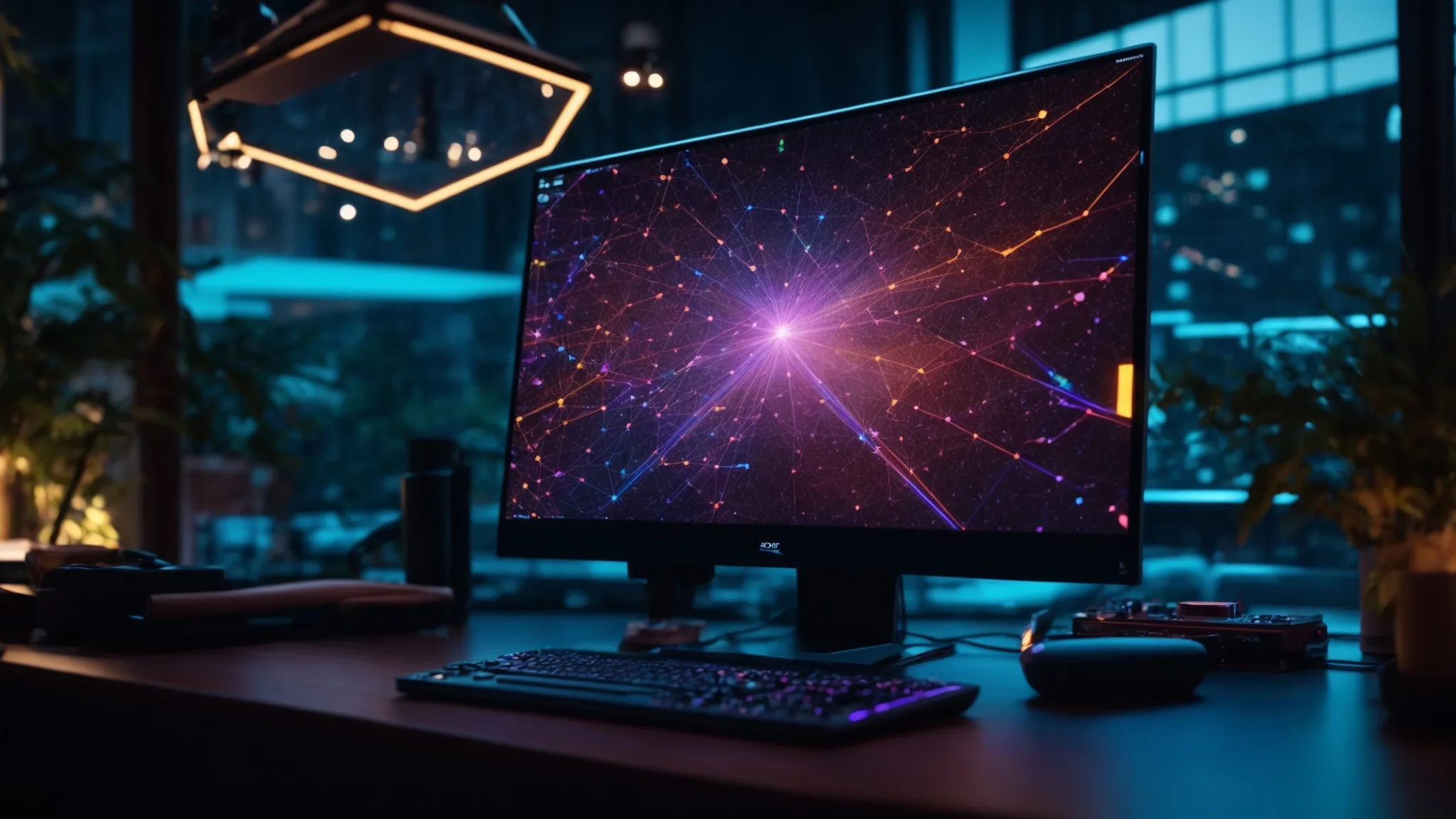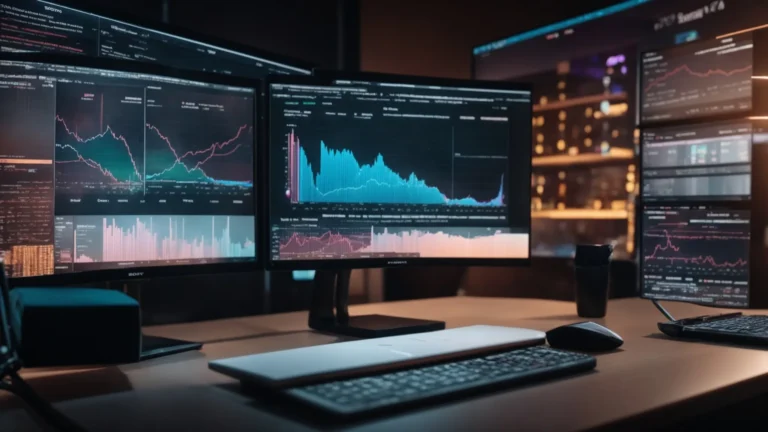Heads Up: When you purchase through links on our site, we may earn an affiliate commission at no cost to you.
Internal linking is a crucial yet often overlooked SEO strategy that enhances site structure, user experience, and search rankings. Businesses can strategically link relevant pages within a website to improve crawlability, distribute link equity (link juice), and guide users toward valuable content.
Unlike external links, which point to other domains, internal links keep users engaged within a website, reducing bounce rates and improving overall navigation. When implemented correctly, internal linking strengthens a website’s hierarchy, allowing search engines to better understand the relationship between pages.
Many websites fail to optimize internal linking, leading to missed SEO growth opportunities. Common mistakes include orphaned pages, excessive linking, and improper anchor text usage. This guide covers the best practices for SEO internal linking, ensuring your website maximizes its search visibility and user engagement.
Key Takeaways
- Internal linking enhances SEO and user experience: Well-structured internal links improve site navigation, page discoverability, and search rankings.
- Anchor text should be relevant and descriptive: Using keyword-rich, natural anchor text improves SEO performance and contextual relevance.
- A logical site structure boosts crawlability. Organizing pages into a clear hierarchy with proper interlinking ensures that search engines can efficiently index important content.
- Link equity (link juice) distribution is crucial: Strategic internal linking boosts page authority, helping important pages rank higher in search results.
- Breadcrumb navigation improves user experience: Using breadcrumb links enhances site navigation and reduces bounce rates.
- Deep linking strengthens SEO value: Linking to older, buried, or underperforming pages helps improve their visibility and engagement.
- Avoid excessive internal linking: Too many links on a page dilute link equity and overwhelm users, reducing their effectiveness.
- Internal linking automation saves time: Tools like Link Whisper, Yoast SEO, and Ahrefs help streamline internal linking for large websites.
- Regular link audits prevent SEO issues: Running internal link audits with Google Search Console, Screaming Frog, and SEMrush helps identify broken links, orphaned pages, and excessive redirects.
- Future trends focus on AI and structured data: AI-driven internal linking tools, voice search optimization, and structured data are shaping the next generation of SEO strategies.
What is Internal Linking, and Why is it Important?

Definition of Internal Links
Internal links connect one website page to another within the same domain. They play a key role in SEO and user experience by allowing search engines and visitors to navigate a site efficiently.
There are two main types of internal links:
- Contextual Links – These are found within the content body and link to related topics or supporting pages.
- Structural Links – Appear in navigation menus, breadcrumbs, sidebars, and footers to improve site usability.
Unlike external backlinks from other websites, internal links help search engines understand a site’s architecture and pass ranking signals between related pages.
How Internal Links Benefit SEO and User Experience
A well-structured internal linking strategy provides multiple benefits:
1. Helps Search Engines Discover and Index Content
Search engines like Google use internal links to crawl and index pages more effectively. When pages are well-linked, Google can:
- Identify important pages based on link prominence.
- Understand content relationships for better ranking categorization.
- Discover new or updated pages faster, improving search indexing.
2. Enhances Site Navigation and User Engagement
Internal links provide logical pathways for users to explore related content, reducing bounce rates and increasing time on site. A well-structured internal linking system makes it easier for visitors to find relevant information, enhancing the overall user experience.
For example, an article on “SEO keyword research” might link to:
- A guide on “Long-tail keyword strategies”.
- A tutorial on “Using SEMrush for competitor keyword analysis”.
- A checklist for “Optimizing content for search engines”.
3. Distributes Link Equity (Link Juice) to Important Pages
Link juice refers to the ranking value passed from one page to another via internal and external links. Pages with strong internal linking benefit from the following:
- Improved authority, as Google sees them as valuable resources.
- Higher rankings for target keywords.
- Increased visibility in organic search results.
For example, a new blog post on “SEO trends” may receive ranking support by linking it to high-authority pillar pages, boosting search performance.
Types of Internal Links
Internal links come in various forms, each serving a distinct purpose:
| Type | Function | Example |
|---|---|---|
| Contextual Links | Links within the main content of a page | “Read our guide on SEO keyword research” |
| Navigational Links | Found in menus, headers, and footers for easy access | “Services, About, Contact Us” |
| Breadcrumb Navigation | Shows a hierarchical path to a page | “Home > Blog > SEO Tips” |
| Footer & Sidebar Links | Common links to important pages | “Privacy Policy, Terms of Use” |
| Deep Links | Links to older or buried content within a site | “Read our advanced guide on technical SEO” |
By structuring internal links effectively, businesses can boost rankings, create seamless navigation, and strengthen their websites’ overall authority.
- Instant feedback
- Valuable insights
- Actionable tips
SEO Internal Linking Best Practices

A well-planned internal linking strategy ensures that search engines and users can navigate a website efficiently. When internal links are structured correctly, they improve crawlability, distribute link juice, and enhance user experience. Below are the best practices for optimizing internal links to maximize SEO benefits.
1. Use Descriptive and Relevant Anchor Text
Anchor text plays a crucial role in internal linking SEO. Search engines use anchor text to understand the context of a linked page. Using descriptive, keyword-rich anchors helps improve ranking signals while maintaining a natural reading flow.
Best Practices for Anchor Text Optimization:
- Use relevant keywords naturally within the anchor text (e.g., “Learn more about SEO keyword research“).
- Avoid generic phrases like “click here” or “read more” that do not convey page relevance.
- Keep it concise and contextual—anchors should fit naturally within a sentence.
- Diversify anchor text to prevent keyword over-optimization (e.g., instead of repeatedly using “SEO best practices,” alternate with “on-page SEO techniques“).
Incorrectly optimized anchor text can make the content look spammy, potentially leading to Google penalties.
2. Maintain a Logical Site Architecture
A website’s internal link structure should follow a clear, hierarchical format, ensuring that:
- Search engines can efficiently crawl and index all pages.
- Users can easily navigate between relevant topics.
- Link authority (PageRank) flows effectively to high-value pages.
Best Practices for Site Architecture Optimization:
- Organize pages into categories and subcategories (e.g., Homepage → Category → Subcategory → Blog Post).
- Create pillar pages as content hubs, linking to related blog posts.
- Use breadcrumb navigation to show users their location within the website.
For example, an SEO agency’s website might structure its content as follows:
- Homepage → Services → SEO Services → On-Page SEO
- Homepage → Blog → SEO Tips → How to Optimize Meta Descriptions
A well-structured internal linking architecture ensures efficient crawling and ranking prioritization for important pages.
3. Prioritize Linking to High-Value Pages
Some pages hold more SEO value than others. Internal links should focus on distributing link juice to important, high-converting pages like:
- Landing pages (for service offerings, lead generation, or e-commerce products).
- High-ranking pages that already attract significant traffic.
- Cornerstone content (pillar blog posts that serve as in-depth guides).
Using Google Analytics and Google Search Console, businesses can identify:
- Which pages receive the most organic traffic?
- Which pages have high bounce rates, indicating the need for stronger internal linking?
For example, if a real estate agency has a blog post on “Best Home Buying Tips,” linking it to a landing page for first-time homebuyers can improve conversions and user engagement.
4. Avoid Excessive Internal Links on a Page
While internal linking is essential for SEO, adding too many links can dilute link value and create a poor user experience. Google recommends keeping the number of internal links on a page reasonable to avoid confusion.
Best Practices for Link Volume:
- Focus on quality over quantity—only link when it adds value to the reader.
- Avoid linking to irrelevant or redundant pages.
- Maintain a balanced approach, ensuring links serve both SEO and usability goals.
For instance, a blog post with dozens of unrelated internal links may overwhelm users, leading to higher bounce rates and lower engagement.
Implementing these best practices can help businesses create a strong internal linking framework, improving SEO rankings and user experience.
Technical Aspects of Internal Linking for SEO

Beyond strategic placement, internal linking involves technical elements that affect SEO performance. Link structure helps search engines crawl, index, and rank pages more efficiently. Below are the key technical considerations when optimizing internal linking for SEO.
1. Optimize URL Structure for Internal Links
A clean, well-organized URL structure enhances search engine indexing and user experience. Internal links should point to URLs that are:
- Descriptive and keyword-rich (e.g., example.com/seo-best-practices/ instead of example.com/page123).
- Short and clean, avoiding unnecessary parameters or dynamic session IDs.
- Canonicalized, ensuring search engines recognize the correct version of the page.
Best Practices for URL Optimization in Internal Linking:
- Avoid linking to multiple URL variations of the same page (e.g., http:// vs. https:// or www vs. non-www).
- Use SEO-friendly slugs that describe the page’s content.
- Ensure internal links do not point to redirected URLs, as excessive 301 redirects can slow down crawling.
2. Manage Nofollow and Dofollow Internal Links Correctly
By default, internal links should be dofollow, allowing link equity (PageRank) to pass between pages. However, in some cases, nofollow attributes should be applied to prevent search engines from indexing low-value pages.
When to Use Nofollow on Internal Links:
- Login pages, checkout pages, or user-generated content that doesn’t need to rank.
- Duplicate content pages (e.g., print-friendly versions of blog posts).
- Affiliate or sponsored links, ensuring they don’t pass ranking value.
Misusing nofollow on important internal links can disrupt link juice distribution and negatively impact ranking potential.
3. Ensure Internal Links Are Mobile-Friendly
With mobile-first indexing, search engines prioritize websites that offer a seamless experience on mobile devices. Poorly optimized internal links can lead to navigation issues, poor usability, and lower rankings.
Best Practices for Mobile-Friendly Internal Links:
- Ensure links are easy to tap (Google penalizes sites where links are too close together).
- Use responsive menus and navigational links that adjust to different screen sizes.
- Avoid excessive pop-ups that interfere with internal link accessibility.
4. Avoid JavaScript-Generated Links That Block Crawlers
Search engines prefer HTML links because they are easier to crawl. JavaScript-based internal links can sometimes prevent search engines from indexing certain pages, leading to lower rankings.
How to Ensure Search Engines Crawl JavaScript Links:
- Test internal links using Google Search Console’s URL Inspection Tool.
- Ensure JavaScript-generated links are rendered correctly in the Googlebot mobile crawler.
- Use progressive enhancement, where critical links are available as plain HTML first, with JavaScript enhancements applied later.
5. Implement Pagination and Sitemaps for Better Internal Linking
Proper pagination and XML sitemaps help large websites organize internal links and ensure that deep pages are still accessible.
Key Optimization Strategies:
- Use rel=prev and rel=next attributes for paginated content to prevent duplicate indexing.
- Include important pages in the XML sitemap to help Googlebot find them faster.
- Avoid linking to orphaned pages (without internal links pointing to them).
By refining the technical aspects of internal linking, websites can improve crawl efficiency, ranking power, and overall user experience.
Measuring and Optimizing Internal Linking for SEO Success

A well-planned internal linking strategy must be continuously monitored and optimized to ensure it delivers the best SEO and user experience benefits. Tracking link performance, user engagement, and search engine visibility allows businesses to refine their approach for maximum results.
1. Using Google Analytics to Track Internal Link Performance
Google Analytics provides insights into how users interact with internal links, helping to identify which pages benefit most from internal linking. Key metrics to track include:
- User Flow shows how visitors navigate between pages, revealing whether internal links lead users to important content.
- Bounce Rate: Helps determine whether users engage with linked pages or leave the site.
- Session Duration & Pages Per Session: Measures how internal links contribute to longer browsing sessions.
How to Analyze Internal Links in Google Analytics:
- Navigate to Behavior > Site Content > All Pages to review page performance.
- Use In-Page Analytics to see where users click most within content.
- Identify underperforming pages and add strategic internal links to improve engagement.
2. Conducting Regular Internal Link Audits
Internal linking audits help ensure all links remain functional, relevant, and optimized. Broken links, unnecessary redirects, and outdated anchor text can harm SEO and user experience.
Steps to Conduct an Internal Link Audit:
- Use Google Search Console to find pages with crawl errors or missing internal links.
- Run a Screaming Frog or Ahrefs site audit to detect broken links and excessive redirects.
- Check for orphaned pages (pages with no internal links pointing to them).
- Ensure key pages receive enough internal link equity by adjusting internal linking structures.
3. Adjusting Internal Links Based on Data Insights
After analyzing internal linking performance, the next step is optimization.
Best Practices for Refining Internal Linking Based on Data:
- Boost underperforming pages: Add more internal links from high-authority pages to boost ranking power.
- Remove outdated or irrelevant links: Ensure all links support site structure and SEO strategy.
- Improve anchor text: Adjust anchor text relevance to match search intent and improve keyword targeting.
- Balance link distribution: Ensure that no single page hoards all internal links, preventing important pages from gaining visibility.
By continuously analyzing and refining internal links, websites can maximize SEO benefits, improve user engagement, and ensure that their internal linking strategy aligns with search engine best practices.
Future Trends in Internal Linking for SEO

As search engines evolve, the role of internal linking in SEO also changes. Advances in AI-driven search, machine learning, and user behavior analysis are reshaping how internal links influence rankings and site authority. To stay ahead, businesses must adopt modern internal linking strategies that align with these emerging trends.
1. AI-Driven Internal Linking Strategies
Search engines like Google increasingly use artificial intelligence (AI) and machine learning to evaluate internal linking structures. AI-powered algorithms analyze:
- The context and intent behind internal links.
- How internal links guide user journeys on a website.
- The effectiveness of link placement in improving engagement and search rankings.
How to Adapt to AI-Driven Internal Linking:
- Use AI-powered SEO tools like Surfer SEO, Clearscope, and Link Whisper to optimize internal links dynamically.
- Focus on semantic relevance, ensuring links connect logically related content.
- Leverage user behavior data to refine internal linking based on how users interact with a site.
2. Voice Search and Conversational SEO’s Impact on Internal Linking
With the rise of voice search and natural language processing (NLP), internal links must align with conversational search queries. Users increasingly search for question-based, long-tail keywords, affecting how internal links should be structured.
Optimizing Internal Links for Voice Search:
- Use question-based anchor text (e.g., “What is SEO internal linking?”) to target voice search queries.
- Link to FAQ-style pages and structured content that directly answers spoken queries.
- Ensure that internal links guide users logically through content pathways optimized for voice assistants.
3. Increasing Focus on User Experience (UX) in Internal Linking
Search engines are prioritizing user experience signals when evaluating internal linking effectiveness. Internal links should not only be SEO-friendly but also intuitive for users.
Best UX-Focused Internal Linking Practices for the Future:
- Minimal yet meaningful links: Rather than overloading pages with multiple links, focus on highly relevant and strategically placed links.
- Interactive link placement: Use context-aware links that appear when users scroll to relevant sections.
- Mobile-friendly internal links: Ensure easy tapability and clear call-to-action (CTA) anchors for mobile users.
4. Structured Data and Smart Internal Linking
Google’s structured data markup is increasing in content discoverability and internal linking automation.
Leveraging Structured Data for Internal Linking:
- Implement schema markup for articles, FAQs, and product pages to enhance search visibility.
- Use automated link suggestions generated by structured data plugins.
- Ensure that internal links align with structured data markup, making content more accessible to search engines.
5. Internal Linking Automation for Large-Scale Websites
Manual internal linking is no longer scalable for large sites. Businesses are now using automation tools to manage internal linking strategies at scale.
Best Tools for Automated Internal Linking:
- Link Whisper (WordPress plugin) for intelligent internal link suggestions.
- Screaming Frog SEO Spider to analyze and optimize large internal linking structures.
- Ahrefs Internal Link Explorer for evaluating page-level link distribution.
By adapting to these emerging trends, businesses can ensure that their internal linking strategies remain future-proof, search-friendly, and optimized for evolving SEO best practices.
Frequently Asked Questions
What is internal linking in SEO?
Internal linking refers to hyperlinks that connect one page to another within the same website. It helps users navigate a site and assists search engines in indexing and ranking pages.
Why is internal linking important for SEO?
Internal linking improves crawlability, link equity distribution, and user engagement. It also helps search engines understand content relationships, leading to better rankings.
What’s the difference between internal and external links?
- Internal links connect pages within the same website.
- External links point to pages on a different website.
Both are important for SEO, but internal links help improve site structure and authority distribution.
How many internal links should a page have?
There are no strict limits, but Google recommends keeping internal links relevant and useful. Avoid excessive linking, as it may dilute SEO value and overwhelm users.
What is link juice, and how does it affect SEO?
Link juice (or link equity) refers to the ranking power passed through internal links. Pages with more internal links from authoritative content tend to rank higher in search results.
Should I use “nofollow” for internal links?
Generally, internal links should be dofollow to pass link equity. However, nofollow can be used for pages that shouldn’t be indexed, like login pages or checkout pages.
What is deep linking, and why is it important?
Deep linking refers to linking to inner pages rather than just the homepage. It helps spread link authority, improves content discoverability, and boosts SEO rankings for less visible pages.
How can I automate internal linking?
SEO tools like Link Whisper, Rank Math, and Yoast SEO help automate internal linking by suggesting relevant anchor text and link placements.
How do I fix broken internal links?
- Use Google Search Console or Screaming Frog to find broken links.
- Redirect 404 error pages using 301 redirects.
- Update old internal links to point to relevant pages.
What are future trends in internal linking?
AI-driven link optimization, structured data markup, and voice search-friendly internal linking will shape the future of SEO strategies.
Conclusion
A well-executed internal linking strategy is essential for SEO success and user experience. By strategically linking related pages, businesses can enhance crawlability, distribute link equity, and improve site navigation. Effective internal links guide users and search engines, ensuring valuable content is easily discoverable and well-structured.
To maximize the benefits of internal linking, it is crucial to follow SEO best practices, such as using descriptive anchor text, maintaining a logical site architecture, and prioritizing high-value pages. Regular link audits, mobile-friendly navigation, and AI-driven automation can further refine internal linking strategies for long-term search engine visibility.
As Google’s algorithms evolve, the focus on user intent, structured data, and AI-powered link optimization will continue to shape internal linking strategies. Businesses that adapt to these emerging trends will stay ahead in search rankings while delivering a seamless user experience.















